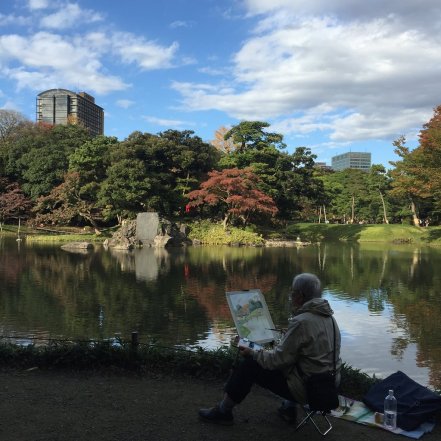Koishikawa Korakuen Garden

In the early Edo period, in 1629, Yorifusa, the founder of the Mito Tokugawa family, built the garden for his central residence in Edo (later to become the main residence). A completed garden. When creating the garden, Mitsukuni took in the opinion of Ming Confucian scholar Zhu Shunsui, and named it 'Korakuen' from the Chinese teaching that ``(a warrior) should be sad before the sorrows of the world, and enjoy after the pleasures of the world''. I was.
The garden is a circuit-style artificial mountain fountain garden with a pond at its center, and there are landscapes with the names of famous Chinese places everywhere, giving it a rich Chinese taste. In addition, one of the characteristics of this garden is the skillful expression of landscapes such as lakes, mountains, rivers, and countryside that imitate the scenic beauty of various places.
This land is located at the tip of the Koishikawa Plateau, and the Kanda Aqueduct was drawn into the garden. The garden was built under the influence of Mitsukuni's Confucian thought, and contrasts well with the bright and open Rikugien Garden.
In March 1952, the garden was designated as a special historic site and a special scenic spot under the Law for the Protection of Cultural Properties. Hama-rikyu Gardens and our garden are the only metropolitan gardens that have been designated both as a special historic site and as a special scenic spot. In Japan, Rokuonji (Kinkakuji), Jishoji (Ginkakuji), Daigoji Sanboin in Kyoto City, Heijokyo Sakyo Sanjo Nibogu Ruins in Nara Prefecture, Itsukushima in Hiroshima Prefecture, Motsuji Garden in Iwate Prefecture, Ichijo in Fukui Prefecture There are only 9 places including the Tani Asakura Mr. Garden.
Detailed information
Location: 1-chome Koraku, Bunkyo-ku, Tokyo
Opening hours: 9:00 am to 5:00 pm (admission until 4:30 pm)
Closed: Year-end and New Year holidays (December 29th to January 1st of the following year)
Admission fee: General 300 yen
【inquiry】
Koishikawa Korakuen Service Center 03-3811-3015











